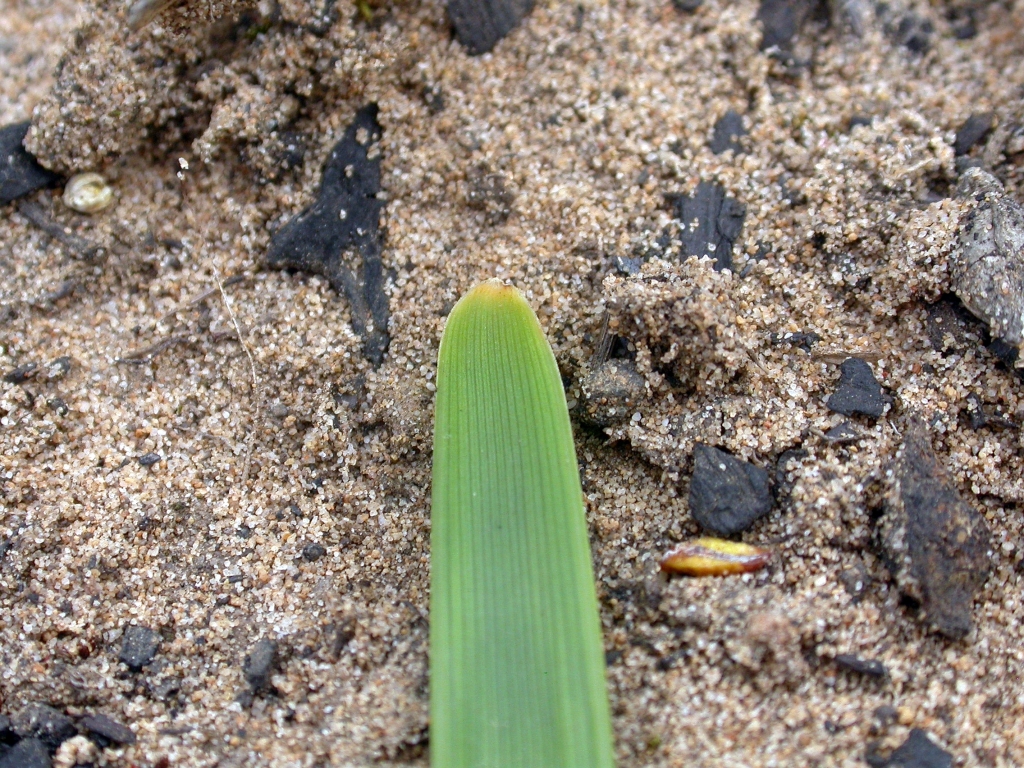Lomandra filiformis subsp. coriacea
A.T.Lee Wattle Mat-rushLeaves flat or nearly so, coriaceous or firm, (7–)13–47 cm long, (1.5–)2–5(–8.5) mm wide, usually grey-green; margins usually scaberulous; apex usually entire (points readily eroded). Male inflorescence (3–)5–18 cm long, up to c. one-half as long as the leaves, with all axes scabrid or frequently smooth (particularly when immature); non-flowering axis exposed for (1–)1.5–2 cm; flower-bearing axis (2–)4–14 cm long. Female inflorescence (0.5–)2–5(–17) cm long, with axes usually scabrid (usually less so than for the axes of the male inflorescences). Flowers Sep.–Mar.
LoM, Wim, GleP, VVP, VRiv, MuF, GipP, OtP, WaP, Gold, CVU, GGr, DunT, NIS, EGL, EGU, WPro, HSF, HNF, OtR, Strz, MonT, VAlp. Also widespread in south-eastern NSW, occasional in northern NSW, rare in Qld. Occurs in shallow gravelly-clay or sandy soils of rocky or stony areas, often in dry open-forests and woodlands.
Included under this name currently is a form with green, smooth-margined leaves that are broader than typical (to 8.5 mm wide. It is currently known from heathy woodland in the Anglesea, Grampians and Portland areas and appears to warrant taxonomic recognition.
Conn, B.J. (1994). Xanthorrhoeaceae. In: Walsh, N.G.; Entwisle, T.J., Flora of Victoria Vol. 2, Ferns and Allied Plants, Conifers and Monocotyledons, pp. 720–734. Inkata Press, Melbourne.
 Spinning
Spinning


